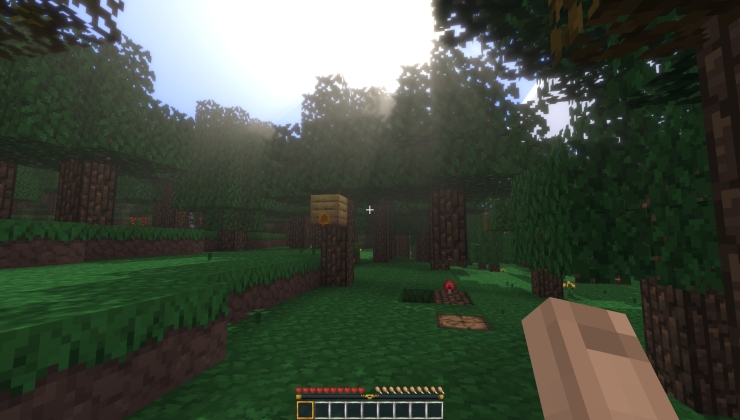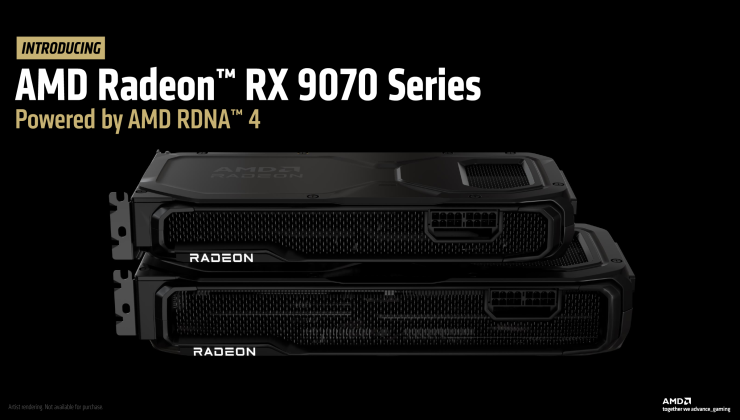Some interesting Linux industry news for you here, as the long road towards Wayland by default everywhere is taking another big step with Red Hat Enterprise Linux (RHEL) removing the Xorg server and other X servers (except Xwayland) from RHEL 10 and the following releases.
From their announcement by developer Carlos Soriano Sanchez posted November 27th:
We want to recognize the significant effort all these organizations and individuals have made, especially the rest of the upstream community, without whom this project would never be so mature. This effort gave us the confidence to first make Wayland default for most use cases in RHEL 8, followed up with the deprecating of Xorg server in RHEL 9, with the intention of its removal in a future release. Earlier this year (2023), as part of our RHEL 10 planning, we made a study to understand Wayland’s status, not only from an infrastructure perspective, but also from an ecosystem perspective. The result of this evaluation is that, while there are still some gaps and applications that need some level of adaptation, we believe the Wayland infrastructure and ecosystem are in good shape, and that we’re on a good path for the identified blockers to be resolved by the time RHEL 10 is out, planned to be released on the first half of 2025.
With this, we’ve decided to remove Xorg server and other X servers (except Xwayland) from RHEL 10 and the following releases. Xwayland should be able to handle most X11 clients that won’t immediately be ported to Wayland, and if needed, our customers will be able to stay on RHEL 9 for its full life cycle while resolving the specifics needed for transitioning to a Wayland ecosystem. It’s important to note that “Xorg Server” and “X11” are not synonymous, X11 is a protocol that will continue to be supported through Xwayland, while the Xorg Server is one of the implementations of the X11 protocol.
Red Hat and their engineers have their fingers in many pies across the Linux space, so this is a pretty big move, and one they say will enable them to "tackle problems such as HDR, increased security, setups with mixed low and high density displays or very high density displays, better GPU/Display hot-plugging, better gestures and scrolling, and so on" — which of course will end up benefiting everyone because that's how open source works.
Have you fully switched over to Wayland yet?
Wayland will never be usable for productive software, such as DAWs, since the wayland devs refuse to support the necessary protocols to make them work.
What's DAWs and what protocols are missing?
Wayland will never be usable for productive software, such as DAWs, since the wayland devs refuse to support the necessary protocols to make them work.
What's DAWs and what protocols are missing?
Digital Audio Workstations. And this is pretty funny, seeing as I just read a while back that PreSonus Studio One recently added Linux support and requires Wayland.
Digital Audio Workstations. And this is pretty funny, seeing as I just read a while back that PreSonus Studio One recently added Linux support and requires Wayland.
Heh? What kind of issues can be missing then? Pipewire can work very well for audio and can be integrated with Wayland compositors properly. Wayland is a display / graphics protocol, what does audio have to do with it anyway?
Last edited by Shmerl on 28 Nov 2023 at 5:42 pm UTC
I was shopping for a new monitor for black Friday and was debating with myself about how useful would HDR and Freesync features be since Wayland can't support those yet and I don't really know when they'll get decent support.
Hopefully the wayland folks remember about the gamers when prioritizing the missing features.
I am in a similar boat.
You can ALREADY use HDR to a degree in Linux, but largely its not practical yet.(on AMD and possibly Intel GPU you can use mpv player to watch videos in HDR)
Most Linux native don't have and probably won't have HDR. With proton its a different story. It emulates Windows environment. And does it pretty good too. I imagine within year or so we will have HDR on Gnome/KDE. Then we need HDR support in Web Browsers + more Media Players.
I don't care about whole environment HDR, I just need it in games, browsers, video players. Some will care for Blender, etc.
Is there anyone else in the same case?
What about people who likes XFCE (like me)?
Is there anyone else in the same case?
https://wiki.xfce.org/releng/wayland_roadmap
Doesn't look like they have an ETA yet.
What about people who likes XFCE (like me)?Unless you use XFCE on RHEL why worry?
Is there anyone else in the same case?
Yeah I saw, that's why I asked...What about people who likes XFCE (like me)?
Is there anyone else in the same case?
https://wiki.xfce.org/releng/wayland_roadmap
Doesn't look like they have an ETA yet.
I use XFCE.What about people who likes XFCE (like me)?Unless you use XFCE on RHEL why worry?
Is there anyone else in the same case?
I use XFCE.
But not on RHEL? Meaning other distros aren't removing xorg yet, which could make it an issue.
Last edited by Shmerl on 28 Nov 2023 at 6:15 pm UTC
I use XFCE.
But not on RHEL? Meaning other distros aren't removing xorg yet, which could make it an issue.
Yeah I know, sorry maybe I wasn't clear at all (I use XFCE on Manjaro), I meant: for the whole Wayland thing, XFCE seems to be the black sheep here.
And it seems people are quite happy with Wayland and other stuff tied to it, so I'm wondering if XFCE will support it as well in the mid term, and if it doesn't I'm afraid it will be a bad situation for us XFCE folks...
And in that case I don't know what DE I will be using really... I really like XFCE (even if I didn't tried others really hard, though I hate GNOME) and I don't want to change it soon.
Last edited by Cyril on 28 Nov 2023 at 6:25 pm UTC
Sometimes when switching my main monitor off on my dual monitor setup to only use the single display (which works much faster and seamless than on x.org).. when turning the second monitor back on the entire hardware of the panel is locked out ! I cannot access the hardware buttons or even switch the panel off.
I have to physically powerdown the monitor (which if you know how monitors can be when flicking the hardware switch isn't fun electrical wise and it's difficult to reach too)
The hardware i have used worked fine across multiple distro's on x.org for many years never had the entire panel lock up. Im currently on Gnome + AMDGPU if that makes any difference (it could be either of those factors). But i do suspect it's a wayland thing as under x.org i did not come across the issue.
Don' get me wrong, im happy other than that but im just hoping that wayland doesn't somehow destroy my hardware, as we all beta test until perfection. i never felt like this was probable on x.org (even if it was)
Last edited by Lofty on 28 Nov 2023 at 6:47 pm UTC
What about people who likes XFCE (like me)?I switch between XFCE and Gnome. I prefer XFCE. Wayland support is planned by XFCE.
Is there anyone else in the same case?
https://wiki.xfce.org/releng/wayland_roadmap
I have been using XFCE for years. I switched to gnome. Wayland allows for much smoother experience in games. Much less stuttering. And that was with Xorg having HW sync enabled on VERY descent hardware.
Worry not, young one.I use XFCE.
But not on RHEL? Meaning other distros aren't removing xorg yet, which could make it an issue.
Yeah I know, sorry maybe I wasn't clear at all (I use XFCE on Manjaro), I meant: for the whole Wayland thing, XFCE seems to be the black sheep here.
And it seems people are quite happy with Wayland and other stuff tied to it, so I'm wondering if XFCE will support it as well in the mid term, and if it doesn't I'm afraid it will be a bad situation for us XFCE folks...
And in that case I don't know what DE I will be using really... I really like XFCE (even if I didn't tried others really hard, though I hate GNOME) and I don't want to change it soon.
For it is usual that XFCE appear be dead. But you rest assure, it always be that way. For we once feared it was dead because of GTK3, but alas it eventually got GTK3 support.
XFCE is not dissimilar to Gentoo in this regard, both have been reported "dead" on multiple occasions, but it is far from the truth. XFCE may be slow to adopt Wayland, but it will get there and you not be left in a situation where you cannot use it.
The reason be simple: They are niche projects. They are not the current "popular" projects, so they get a lot less contributors, which makes things appear slower.
But alas, both will say the same: The news of my death has been greatly exaggerated.
Yeah I know, sorry maybe I wasn't clear at all (I use XFCE on Manjaro), I meant: for the whole Wayland thing, XFCE seems to be the black sheep here.Keep in mind that of all the desktop environments in Linux, only GNOME and KDE Plasma have full Wayland support, and KDE only started recommending Wayland over Xorg a couple of weeks ago.
As I understand it MATE, Cinnamon, Budgie and LXQt only have experimental or no support for Wayland. I'm guessing Xorg will be around for quite a while in most distributions, and there will be time for Wayland ports.
For RHEL Red Hat supports a release for 10 years, so planning ahead for 2035 (RHEL 10 releases in 2025) and dropping a previously deprecated system seems quite understandable in their situation.
Given that most of what I do on Linux is gaming, a lot of the time I would be using XWayland, so there's no point in using Wayland for me, not until it becomes impossible to live without. There are other issues too, and it's simpler to stick to the same thing I have been using all these years.
This is coming from an AMD GPU user, by the way. It's not like gaming is impossible on Wayland, or anything, I chose not to use it.
It's sooo nice not to have applications randomly modeset your monitor, grab your mouse, hide windows, steal focus, refuse to full screen or resize. Especially with a tiling WM. That alone was worth the hassle when I switched to Wayland CA 2018.
Now, that development is interesting. It's no secret that Linux is big in the entertainment industry, with a lot of professional tools (the renderer from Pixar, Davinci Resolve, etc) supporting Linux. I guess HDR work is for them, first and foremost.
But in the EDA (electronics design automation) industry for instance, most vendors and users are elbow-deep in the X11 pie, so it's a bit hard seeing this work out (thankfully xwayland works pretty well these days, but they will have to adjust some tools like IBM LSF, which can be used to run GUI apps on a remote machine in a cluster). That said, the industry moves slowly, and RHEL8 is slooowly gaining traction, so there's still some time to adapt.
Overall there's very little X11 can do that Wayland can't be made to do better. For instance, one could imagine sharing an interactive window among multiple remote users, thanks to multi seat support, perhaps even with mixed DPI. Wayland is easier to extend with new protocols.
Seems like the creator of Xscreensaver is rather upset about this development, given Wayland has no way to implement screen savers at all.Another win for Wayland?
Seems like the creator of Xscreensaver is rather upset about this development, given Wayland has no way to implement screen savers at all.Another win for Wayland?
In its way. Since the passing of CRT monitors there hasn't been that much point having screensavers at all, so it's just a niche enthusiast thing now.
Seems like the creator of Xscreensaver is rather upset about this development, given Wayland has no way to implement screen savers at all.Not directly, no.
But, you can "sort of" get it working, as discussed here:
https://www.linux.org/threads/xscreensaver-under-wayland.43543/










 How to set, change and reset your SteamOS / Steam Deck desktop sudo password
How to set, change and reset your SteamOS / Steam Deck desktop sudo password How to set up Decky Loader on Steam Deck / SteamOS for easy plugins
How to set up Decky Loader on Steam Deck / SteamOS for easy plugins
See more from me